
mother city

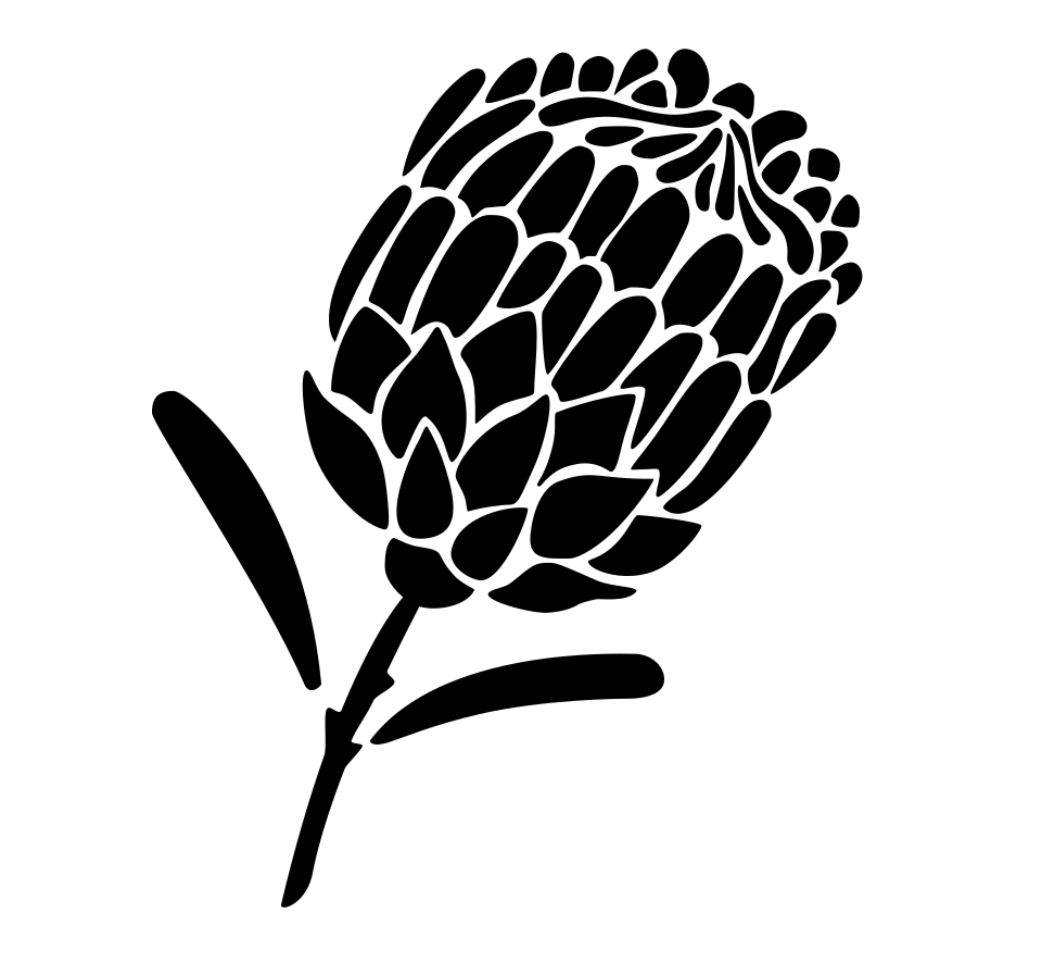
Nestled between a rugged mountain range and the Atlantic Ocean, Cape Town is one of the most beautiful cities in the world. It’s also one of the most popular tourist destinations in all of Africa. This multicultural city enjoys a superb natural setting, pristine beaches, sophisticated infrastructure and a mild, Mediterranean climate.
According to Xhosa legend, a great battle once raged between the god Qamatha and Nkanyamba, the sea dragon, over the creation of dry land. Qamatha’s mother came to his aid by creating four giants to defend the points of the compass. With the battle won, the giants turned to stone to guard the land for eternity. Umlindi Wemingizimu, the “Watcher of the South”, looks down on the city of Cape Town as Table Mountain.
 Find out about Cape Town for your next African safari. We have ready-made safaris to choose from, or ask us to build one just for you.
Find out about Cape Town for your next African safari. We have ready-made safaris to choose from, or ask us to build one just for you.
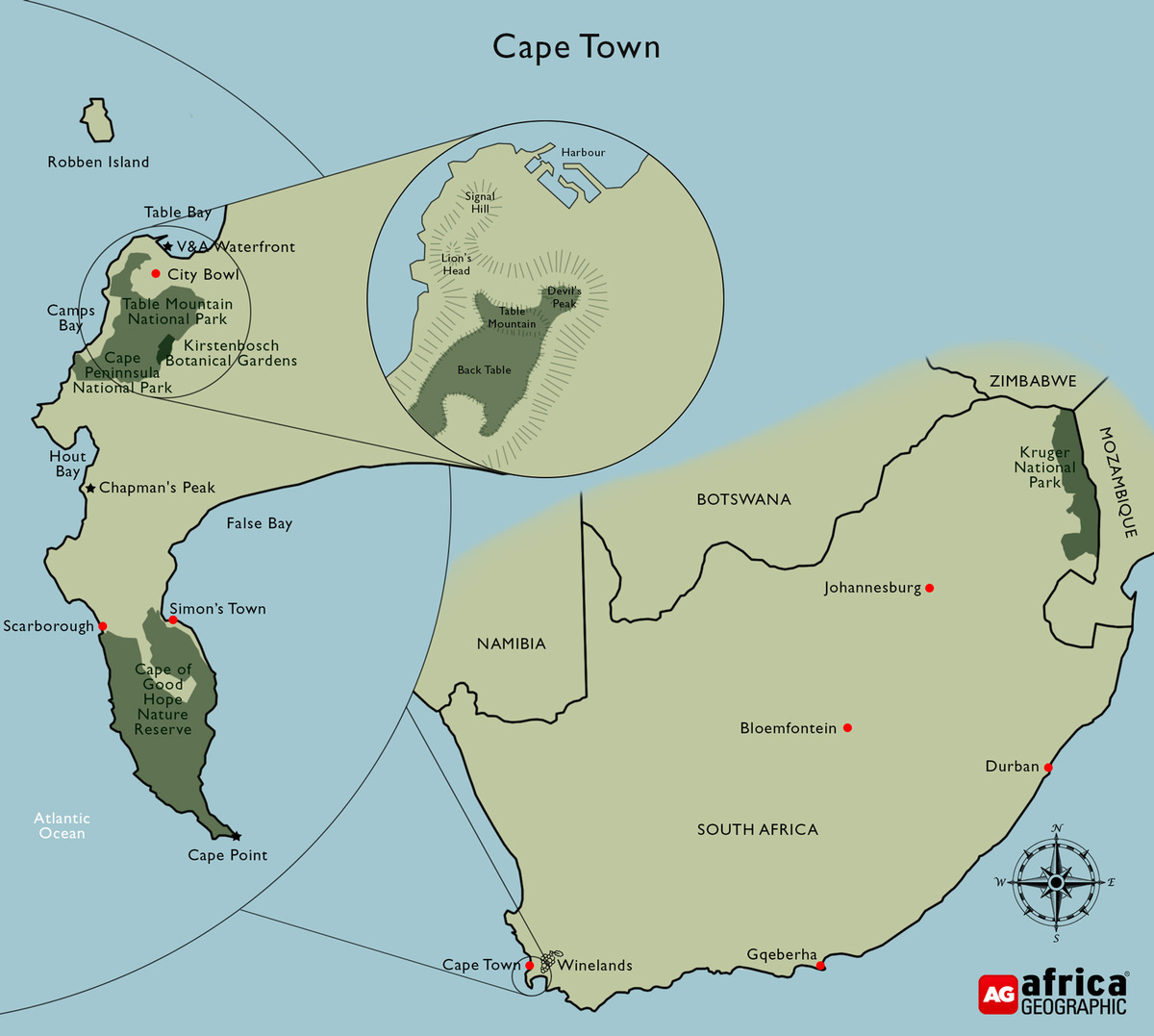
Cape Town
The looming form of Table Mountain dominates views from the city that is sandwiched between its edifice and the icy Atlantic Ocean. The capricious seas are tamed by the harbour of the aptly named Table Bay – a gateway to South Africa that sets the stage for a rich history and melting pot of colourful cultures. Situated in South Africa’s southwestern corner, Cape Town is one of the country’s largest cities and most popular tourist destinations – for good reason. It offers a curious combination of laid-back beach town and edgy urban expression.
The cosmopolitan atmosphere is offset by spectacular natural surrounds that captivate locals and visitors. From the rich plant life of the Cape Floristic Region (more on that later) to the abundant marine ecosystems and pristine white beaches, Cape Town is a nature enthusiast’s playground. With the addition of every convenience of modern city life blended with a history of transformation, the result is a traveller’s paradise.

Table Mountain (and friends)
People often describe the topographical set-up of Cape Town as “armchair-like”, with the sprawling City Bowl nestled in the seat. The “chair” consists of the northern end of the Cape Fold Mountain range that extends along the Cape Peninsula to the Cape of Good Hope. The back of the chair is formed by the iconic Table Mountain, with Lion’s Head to the west and Devil’s Peak to the east, creating the arms on either side. This natural amphitheatre forms the iconic backdrop to the city below, while the opposite side, the “Back Table”, includes the gentler eastern slopes of some exquisite conservation areas. The Back Table’s western edge (the Atlantic side) is home to the mountains of the Twelve Apostles.

Table Mountain is a significant tourist attraction and one of South Africa’s most photographed landmarks. The top section includes a plateau over 1,000m above sea level and roughly three kilometres long. Here visitors can stroll along a network of paths to take in the spectacular views from every angle before stopping for a snack at the restaurant (or a sugary drink to steady the nerves of the vertiginous and wind-swept mountain). The easiest way to access this mountain is via the cableway, which has been operational since 1929 and the five-minute journey in the transparent car allows for plenty of time to take a multitude of photographs. Naturally, the view is occasionally obscured by orographic clouds which form when south-easter winds blow in from the sea, ascend the cliffs and condense in the cooler air. This tablecloth of clouds is guaranteed to rouse a local raconteur from somewhere. They will then promptly launch into the headache-inducing tale of a smoking contest between retired bad boy buccaneer Jan Van Hunks and the devil himself. Nearby Devil’s Peak also owes its name to this Dutch folk story.
Table Mountain National Park, along with several other surrounding protected areas, Lion’s Head (and the lion’s rump, Signal Hill) and Devil’s Peak are all crisscrossed by a series of well-established hiking trails of various difficulty levels. Most of the more popular routes can be accessed free of charge, though some will require a relatively cheap permit. Of all of Cape Town’s many drawcards, the hiking opportunities are probably at the top of the deck. From casual ramblers to skilled adventure-seekers, there are trails on offer for anyone wishing to revel in the breath-taking vistas. It is important to plan these hikes ahead of time and travel in a group to ensure the enjoyment and safety of all concerned, as the weather in Cape Town is famously unpredictable.
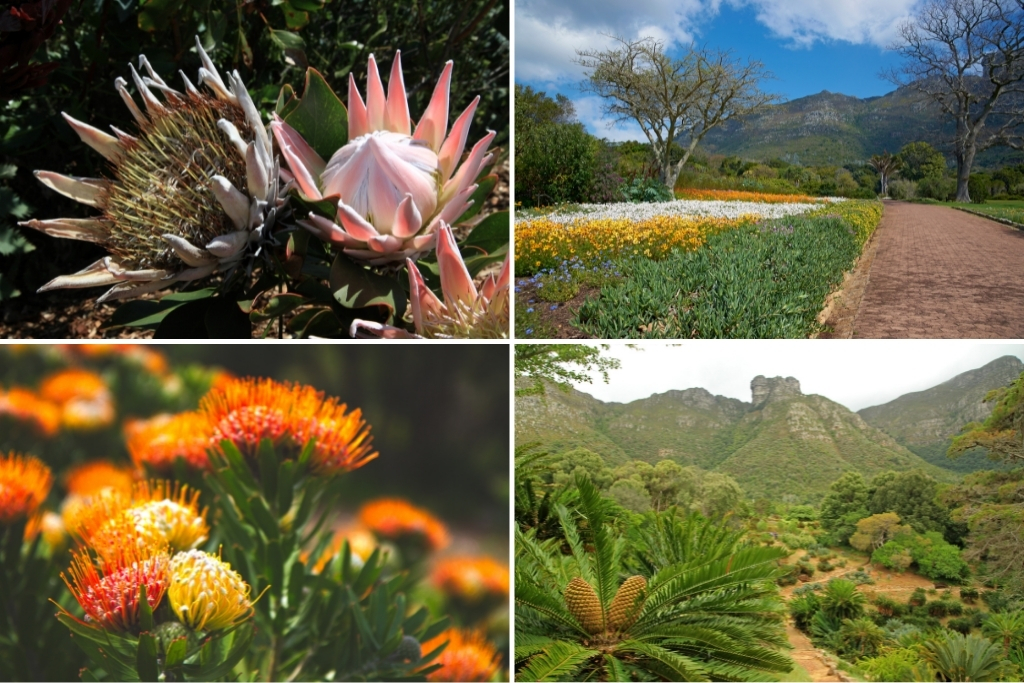
Fynbos and the Cape Floral Region
Part of what makes the scenery so special is the unique, astonishingly diverse plant life of the Cape region. Endangered (and in some cases critically endangered) fynbos types dominate the scrubland vegetation, with probably the most famous species being the dramatic proteas (South Africa’s national flower). The flora is part of the smallest of the six recognised floral kingdoms: the Cape Floristic Kingdom. It consists of 9,000 highly endemic vascular plant species, around 80% of which belong to fynbos families. So, while the Cape Floristic Region covers less than 0.5% of Africa’s surface area, it is home to close to 20% of the continent’s plant species. For this reason, Table Mountain National Park and seven other representative regions are the “Cape Floral Region Protected Areas” – a UNESCO World Heritage Site.
One of the best places to take in this spectacular array is in Kirstenbosch National Botanical Garden, which nestles against the eastern edge of the Back Table. The world-famous garden was first established to preserve the native flora of the region but has now extended to include cultivated exhibits of representative vegetation types from throughout the country. The many paths and displays should not be rushed, and visitors should set aside at least a day for exploring this hotspot of natural and cultivated beauty. Several trails lead up into the mountains, including Skeleton Gorge, one of the most accessible routes to the top of Table Mountain.
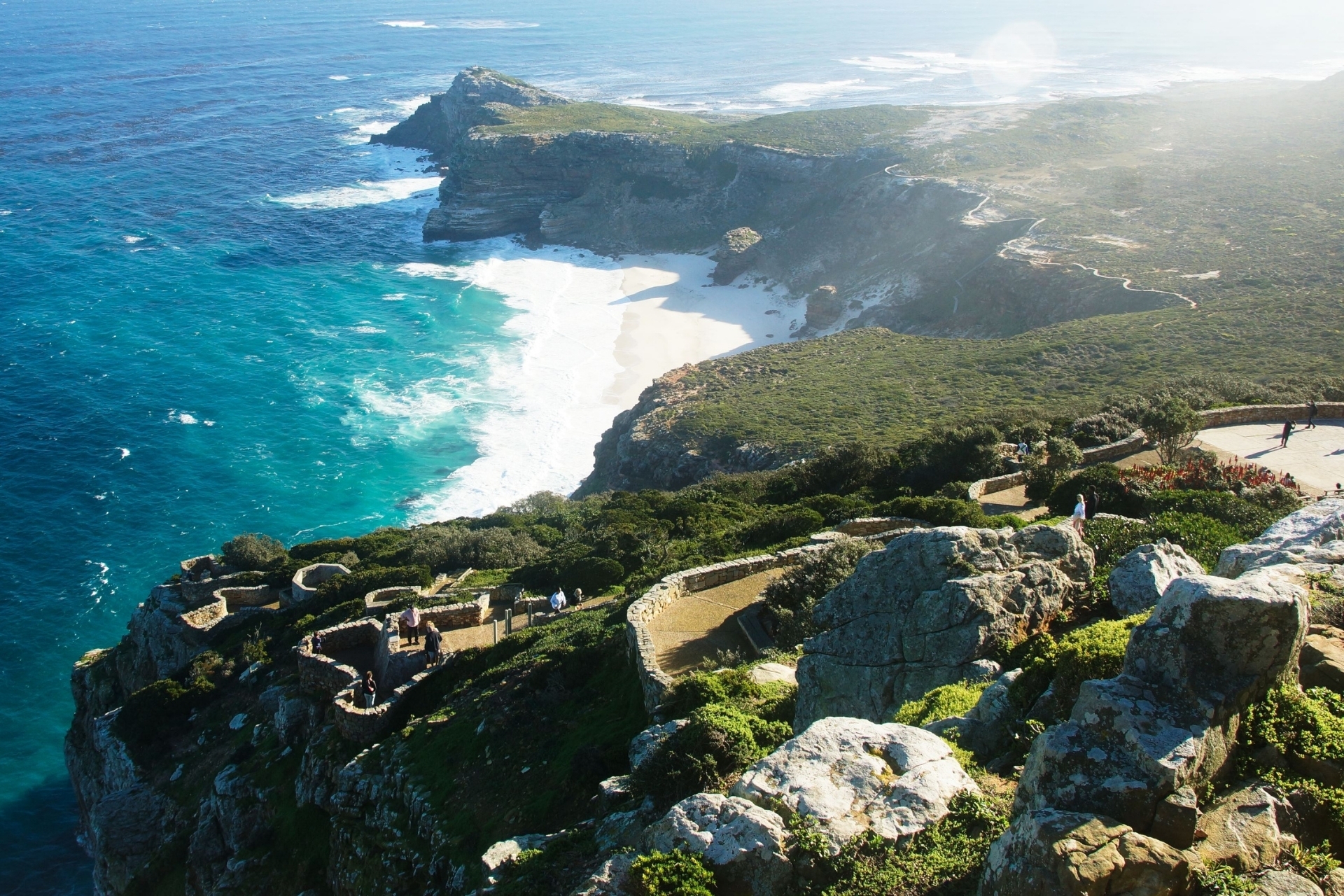
Chapman’s Peak and the Cape of Good Hope
The next tick off the Cape Town checklist has to be a round trip along the Cape Peninsula via the picturesque town of Hout Bay and winding Chapman’s Peak Drive. Though Chapman’s Peak Drive comes with a small toll, the views along the road cut into the side of the eponymous mountain are well worth the price. The precipitous cliffs plunge to the rocks below, which in turn are battered by the waves of the ocean. The drive is also an excellent place to look for whales from around August until November.
A journey through the Cape Peninsula needs to be conducted at a sedate pace (this principle applies to Cape Town in general – see more below), with plenty of time set aside to explore the quaint seaside villages and beaches along the coastline. Arty seaside haunts like Noordhoek, Kommetjie and Fish Hoek are lined with boutique shops, tiny galleries, and family-run restaurants. Simon’s Town, once a naval base, is also famous for Boulders Beach and Foxy Beach and their resident African penguin colonies. These endangered little characters are found only on the southwestern coast of Africa and are completely habituated to the comings and goings of eager tourists. However, it is well worth remembering that while the penguins will allow people to get incredibly close, there is a limit to their forbearance and a bite from the razor-sharp, fishy beak of a penguin will not be readily forgotten.

The southernmost 20% of the Cape Peninsula is a section of Table Mountain National Park known as the Cape of Good Hope. This rugged and wild ecosystem is a haven for many different species of sea birds. To make things a touch confusing, Cape of Good Hope is also used to refer to the rocky headland on the southwestern tip of the Cape Peninsula, while Cape Point and its two lighthouses occupy the south-eastern tip. Contrary to popular belief, this is not the southernmost point of the African continent (that title goes to Cape Agulhas further east), nor does it mark the exact spot where the warm Agulhas Current of the Indian Ocean and cold Benguela Current of the Atlantic meet. Though it is undoubtedly true that the intermingling of these two monstrous currents contributes to the micro-climate of Cape Town, their actual meeting point fluctuates and is usually closer to Cape Agulhas.
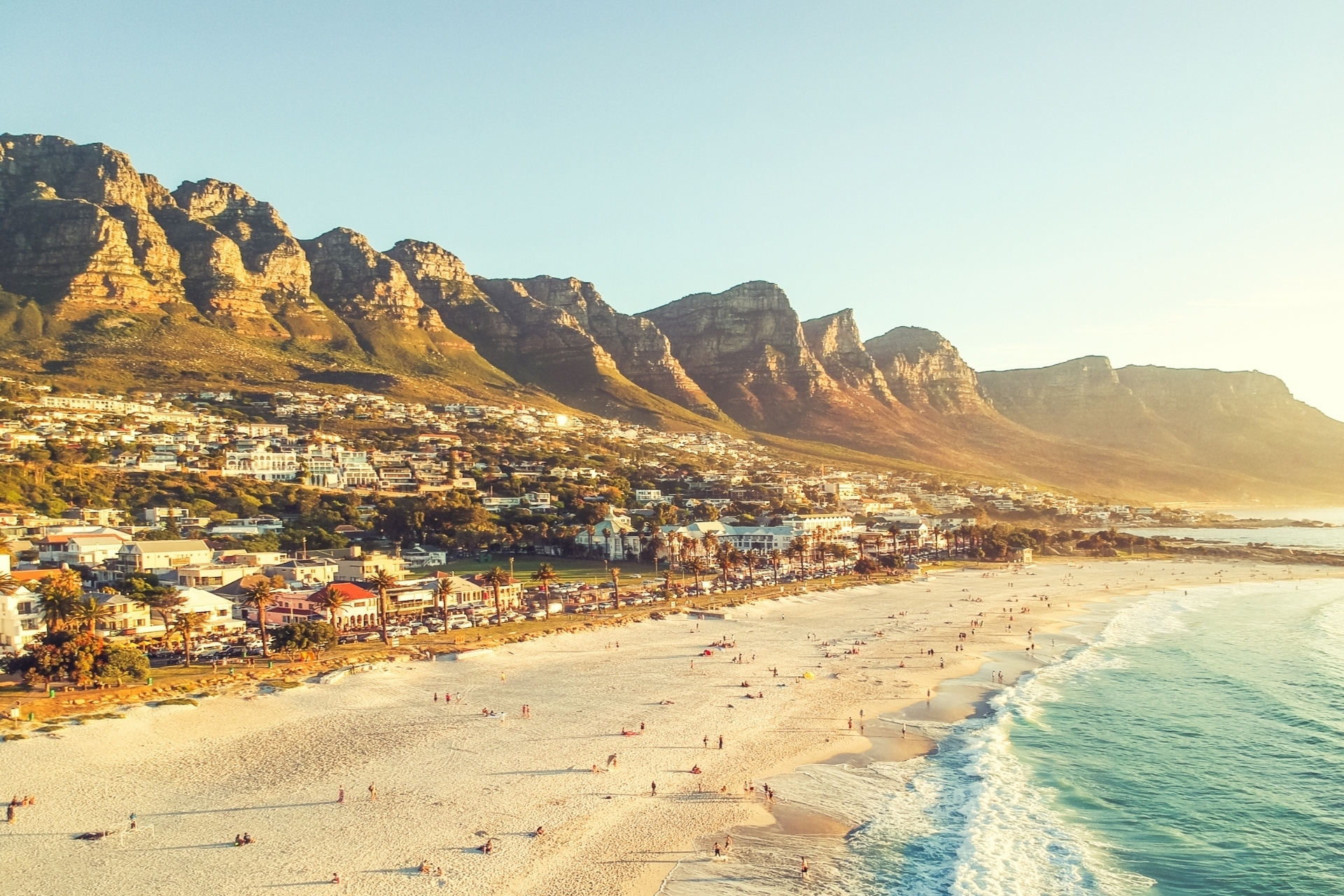
Beaches and bays
After a few strenuous hikes and activity-filled seaside town visits, a day on the beach is called for, and Cape Town has a number of stunning options. The beaches offer everything from dazzling white sands and turquoise waters to ample space and calm coves. The accompanying promenades are usually filled with joggers, courting couples and happy families. There is only one minor drawback – the water is my-feet-have-turned-numb-and-my-shins-hurt cold. Fortunately, during the blistering summers, a refreshing dip is precisely what is called for. Some of the more famous beaches include Clifton 1-4, Camps Bay, Llandudno, Muizenberg (warmer water and a great place for novice surfers), Long Beach and Bloubergstrand (both popular kite-surfing spots). During the height of the tourist season (December and January), these beaches can be pretty crowded, and it may well be worth befriending a local to get inside information on the less frequented options.
Though the cold seas do not necessarily make for the best casual swimming, they provide the ideal environment for a plethora of marine life. This is because cold water holds more dissolved oxygen than warm water, supporting greater ecological diversity. Firm favourites with visitors are the Cape fur seals, which are regularly encountered sunning themselves around the waterfront. For a more authentically wild experience, visitors can take a trip to Seal Island in False Bay, where tens of thousands of fur seals gather together in a noisy, smelly, pinniped extravaganza. There is also an option to join the seals in the water and watch as they transform from awkward land-dwellers to sleek and agile underwater predators in the kelp forests.
Of course, they are not the only predators that navigate the icy waters, and seals have to keep a sharp eye out for sharks. Once considered the great white shark capital of the world, with photographers flocking to capture their famous “breach”, there has been a distressing reduction in the number of shark sightings around Cape Town in recent years.

Eat, drink and be merry
The city itself is as vibrant and diverse as the natural world that surrounds it. Each neighbourhood comes with its own particular ambience that can range from laidback (bordering on horizontal) or hip and happening to arty and urbane or kitsch and shiny. It is not uncommon to arrive at a coffee shop only to find that, in defiance of regular business hours, it is closed because the owner is off surfing. There is an endless array of cosy cafes to experience and a collection of some of the best seafood restaurants the world has to offer. The psychedelic nightlife is usually in full swing for the younger crowd in one of Cape Town’s five major party precincts. The Victoria & Alfred Waterfront at the harbour offers a more sedate and classy collection of shops, museums, and accommodation.
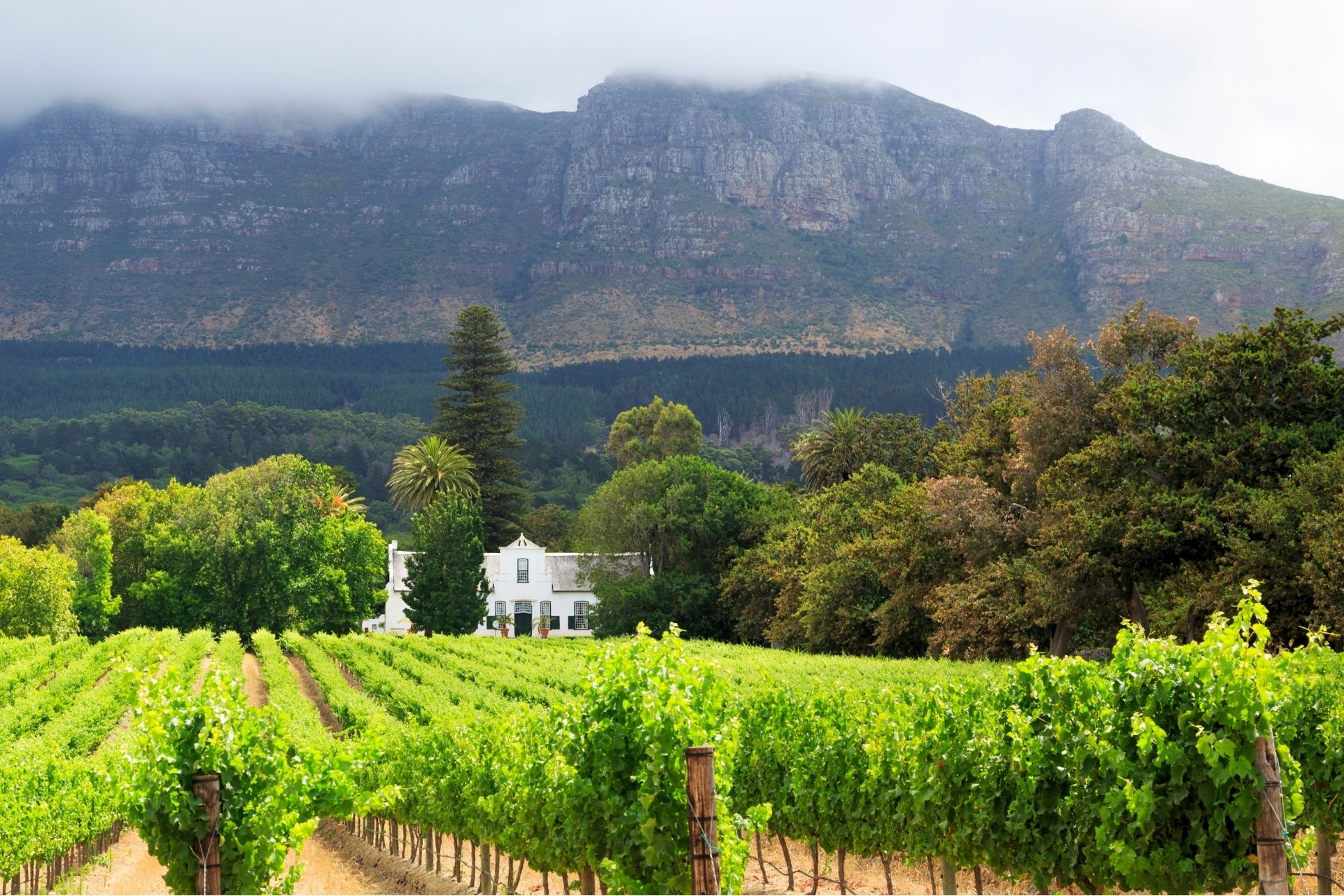
Some of South Africa’s most famous winelands are found just inland from Cape Town, extending to the university town of Stellenbosch and beyond. Here, against the verdant background of mountains and valleys, wine enthusiasts can enjoy the best of South Africa’s celebrated bouquets, and amateurs can pretend to be able to tell the difference. Whatever the experience levels, a good time is guaranteed for all.
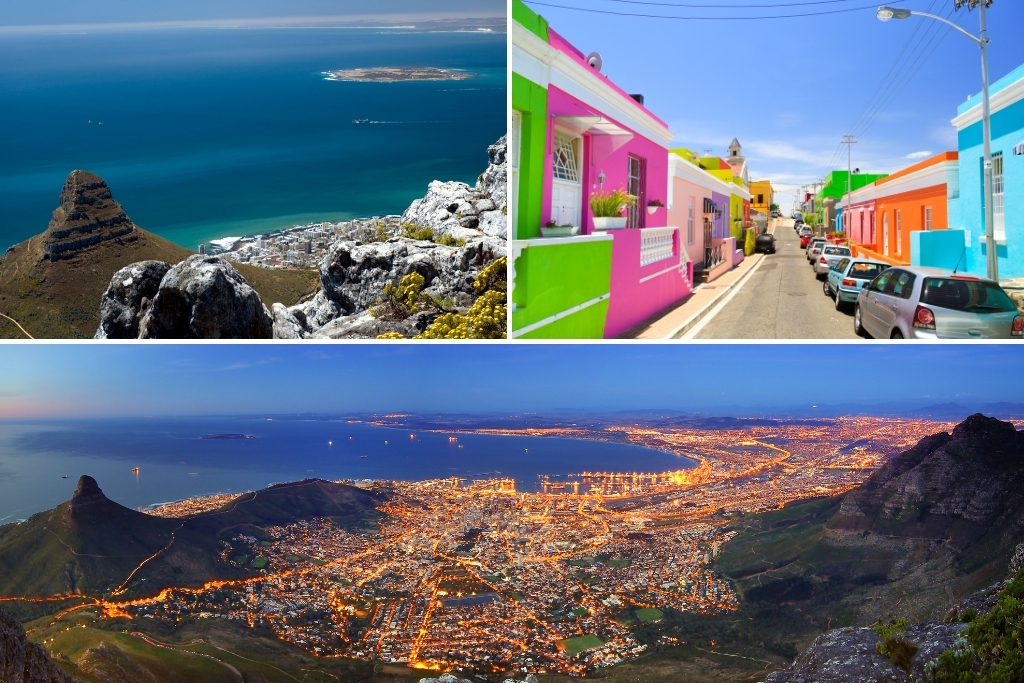
Colourful Cape Town
As lively as various parts of Cape Town are, Bo-Kaap takes home the prize as the most colourful area – quite literally. Situated at the foot of Signal Hill, Bo-Kaap was once home to the city’s slave population, most of whom hailed from Malaysia and Indonesia. The old buildings that line the cobbled streets were built in a mix of Cape Dutch and Georgian architectural styles and are painted in a wondrous combination of just about every colour imaginable. The effect is both beautiful and joyful, despite the area’s troubled history.
A more sombre Cape Town activity that is, nevertheless, an essential part of any visit is a trip to Robben Island and a tour of the prison where Nelson Mandela spent 27 years incarcerated, along with many other apartheid dissidents. The site operates as a living museum and is a World Heritage Site due to its importance to South Africa’s turbulent history.

Explore & Stay
Check out our preferred camps & lodges for the best prices, browse our famous packages for experience-based safaris and search for our current special offers.
There are so many reasons to visit Cape Town that the difficulty comes down to deciding how best to spend one’s time there, especially for shorter stays. Fortunately, navigating the city is a relatively painless exercise, and public transport is readily available for the inner city. It is essential to remember that despite being one of South Africa’s main hubs, the typical Cape Town approach is still one of a relaxed seaside town, and the pace is relatively serene. The best course of action is to have a rough plan in mind but be flexible in the execution.
There are many accommodation options that range from backpackers for the budget-strapped to ultra-luxury guest houses situated right on the sea.

Unlike most of South Africa, Cape Town is a winter rainfall region, and from June until the beginning of September, the weather is blustery and cold. However, July/August marks the peak whale watching season when both southern right and humpback whales gather to calve in the calm waters of the bays. The busiest time of year falls over the December/January period when the weather is spectacular, and the long, balmy days can be enjoyed to the full. Both South African and international tourists flock to the city at this time of year, and the beaches and major attractions can be very crowded.
It may well be best for those with a more flexible schedule to wait until February or even March when visitor numbers calm down, and prices drop, but the weather remains idyllic. The second “shoulder season” falls around September/October, and this is arguably the time of year when the city is at its most spectacular. This is when the wildflowers bloom, adding bright patches of glorious colour to the landscape. It is important to remember that even during these spring months, the Cape Town weather may still have a few tricks up its sleeve, and it’s not uncommon for a cold front to come barrelling in to deposit snow on the inland mountain tops.
Cape Town is one of Africa’s most evocative tourism destinations – a first-world city steeped in history in one of the most magnificent natural settings imaginable.
Resources
For great bush and beach combos that include Cape Town see here
Fanscinating research on domestic cats and their effects on Cape Town wildlife
African Penguin Conservation – Birdlife South Africa is project partner for our private travel & conservation club. You can find out more about their work here
To comment on this story: Login (or sign up) to our app here - it's a troll-free safe place 🙂.![]()






